Project Description
This final project is an example of how you can upcycle plastic waste for the purpose of creating art, recreating a canvas and “paint” from used packaging.

Inspiration
The process of creating paint from plastic was something I first experimented with for a small bit for my capstone project before it changed directions. At the time, I was inspired by John Sabraw, who used paint created from pigments found in toxic sludge found in Ohio’s waterways to make beautiful paintings:
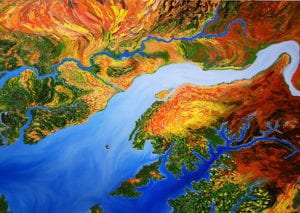
I really liked the idea of turning pollution into paint, and wondered if there was a way to create paint or pigment from plastic waste.
Process + Experiments
The inspiration for the canvas came from an experiment I did for capstone, which was molding a plastic bag to an object using a heat gun:
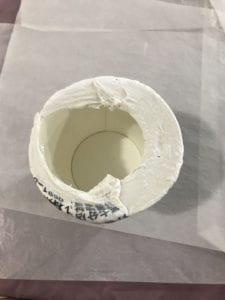
I had first used the ironing technique to make two layers of the plastic bag stiffer, and then used a heat gun to mold it to an old paper cup. The texture and bounciness of the transformed plastic reminded me of a canvas, which influenced my process for creating the canvas.
First, to make the frame, I cut strips from a cardboard box, cutting slits on the ends of each strip so that they could slide in together. For the canvas material, I used the ironing technique to fuse together two layers of a plastic bag. I then glued this sheet to the frame, pulling each side as tightly as I could.
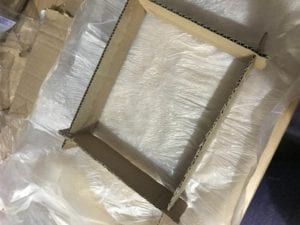
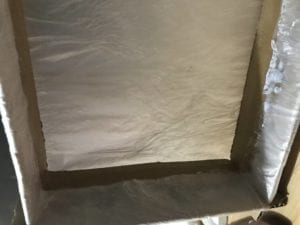
I then wanted to stretch the canvas tighter across the frame with heat. In my previous experience with using a heat gun to mold the plastic, I learned that if you heat it too much, holes will burn through the plastic. I was scared of this happening, so instead of using a heat gun, I used a hair curling iron to touch up spots along the edges of the canvas to gently stretch and harden the material.
For the “paint,” I was inspired by our experiments with melting plastic bags in class. When the plastic is cut into small strips and put into the oven, before it is pressed into the mold, the scrappiness of the plastic reminds me of dried acrylic paint. Thus, I followed this process using cut up pieces of plastic Taobao packaging.
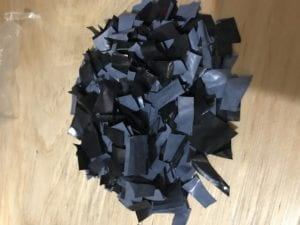
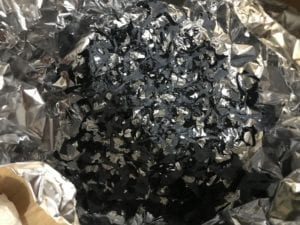
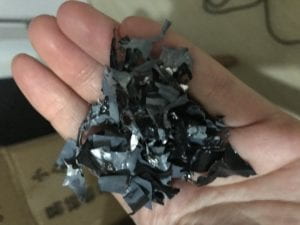
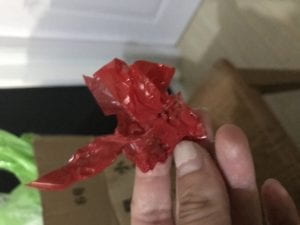
The resulting material was ripped up and glued to the canvas to create the mountain effect. This process was repeated with a red part of a type 2 plastic bag for the sun.
Implementation + Raising Awareness
This technique of creating canvases and melting plastic to look like paint has endless possibilities for implementation. Because artwork is such a subjective artifact, it can be altered in many ways depending on what the creator wants to create. For example, the subject of the work could relate to the place it was created in, and then the work could be sold as a souvenir.
Because the material used is still visibly plastic, it raises awareness of plastic waste. If the plastic was completely transformed to look like something entirely different, I think this awareness potential would be lost.
Further Development + Conclusion
To further develop this project, I would have liked to experiment more with the glue as this was the only material used that was not from waste. One experiment could be cutting slits in the cardboard frame and trying to attach the ironed plastic to it through different tying and knotting techniques. Another experiment could be fusing the “paint” plastic to the canvas plastic using heat rather than glue, and seeing how that would transform the material. There is also a technique of making casein glue from vinegar, baking soda and milk. Based on experiments from replacing milk with soy milk to make material and having this still work, I wonder if making casein glue using soy milk would produce a successfully sticky glue.
In conclusion, there is a lot that can still be experimented and developed with this project. Additionally, in order for it to be of use for anyone to implement, proper documentation or instructions would be necessary for any person who is interested in using plastic waste as an artistic material.
Leave a Reply